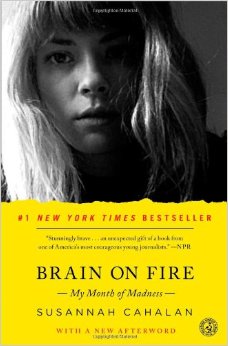Today marks an important moment in history - the President of the United States publicly responded to the more than 73,000 of us who asked the White House to take a stand against modern-day slavery. (Huge thanks to IJM for taking the lead!)

Sheryl WuDunn, co-author of Half the Sky, spoke in Nashville last night. It's an important book and is deeply personal to me as it brings to light the horrific injustices that James and I see on a regular basis in our work in Africa. It's why we pour our work into educating girls, freeing girls from oppression and protecting them from HIV/AIDS. Here are direct highlights from Half the Sky.
21st Century Slavery
Far more women and girls are shipped into brothels each year in the early twenty-first century than African slaves were shipped into slave plantations each year in the eighteenth or nineteenth centuries—although the overall population was of course far smaller then.
Our own estimate is that there are 3 million women and girls (and a very small number of boys) worldwide who can be fairly termed enslaved in the sex trade.
Maternal Deaths
More women die in childbirth in a few days than terrorism kills people in a year.
In the United States, the lifetime risk of dying in childbirth is 1 in 4,800; in Italy, it’s 1 in 26,600; and in Ireland a woman has only 1 chance in 47,600 of dying in childbirth. Overall in sub-Saharan Africa, the lifetime risk of dying in childbirth is 1 in 22.
So lifetime risk of maternal death is one thousand times higher in a poor country than in the West. That should be an international scandal.
HIV/AIDS
Being sold to a brothel was always a hideous fate, but not usually a death sentence. Now it often is. And because of the fear of AIDS, customers prefer younger girls whom they believe are less likely to be infected.
Women are about twice as likely to be infected during heterosexual sex with an HIV-positive partner as men are.
For women the lethal risk factor is often not promiscuity but marriage. Routinely in Africa and Asia, women stay safe until they marry, and then they contract AIDS from their husbands.
Female Genital Mutilation (FGM)
Worldwide, some 130 million women have been cut, and after new research, the UN now estimates that 3 million girls are cut annually in Africa alone (the previous estimate had been 2 million globally).
Domestic Violence
Surveys suggest that about one third of all women worldwide face beatings in the home. Women aged fifteen through forty-four are more likely to be maimed or die from male violence than from cancer, malaria, traffic accidents, and war combined.
Moving Forward
“Empowerment” is a cliché in the aid community, but it is truly what is needed. The first step toward greater justice is to transform that culture of female docility and subservience, so that women themselves become more assertive and demanding. As we said earlier, that is, of course, easy for outsiders like us to say: We’re not the ones who run horrible risks for speaking up. But when a woman does stand up, it’s imperative that outsiders champion her; we also must nurture institutions to protect such people.
In developing countries, tormenting the illiterate is usually risk-free; preying on the educated is more perilous.
The single most important way to encourage women and girls to stand up for their rights is education, and we can do far more to promote universal education in poor countries.
If there is to be a successful movement on behalf of women in poor countries, it will have to bridge the God Gulf. Secular bleeding hearts and religious bleeding hearts will have to forge a common cause. That’s what happened two centuries ago in the abolitionist movement, when liberal deists and conservative evangelicals joined forces to overthrow slavery. And it’s the only way to muster the political will to get now-invisible women onto the international agenda.
I want to be a part of this movement, don't you?
 I just finished reading Brain on Fire: My Month of Madness which is a first-hand account of a young woman’s terrifying experience of an autoimmune disorder that attacks her brain. She is overtaken by seizures, hallucination, paranoia, and the realization that she is going mad.
I just finished reading Brain on Fire: My Month of Madness which is a first-hand account of a young woman’s terrifying experience of an autoimmune disorder that attacks her brain. She is overtaken by seizures, hallucination, paranoia, and the realization that she is going mad.




